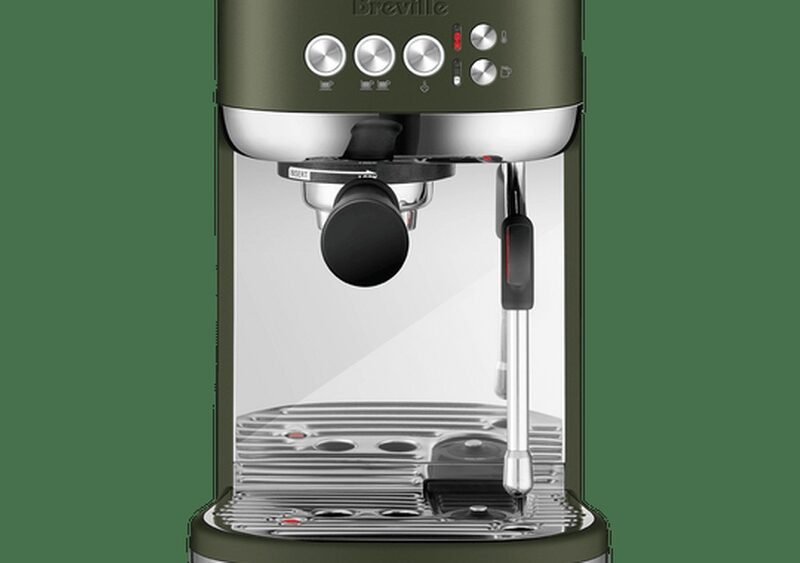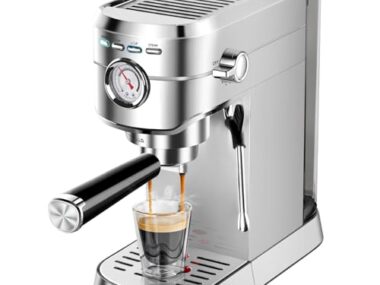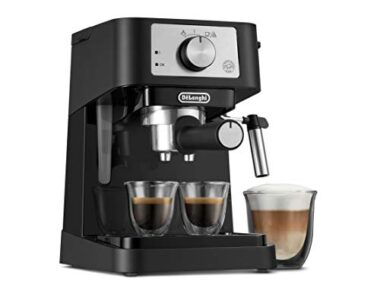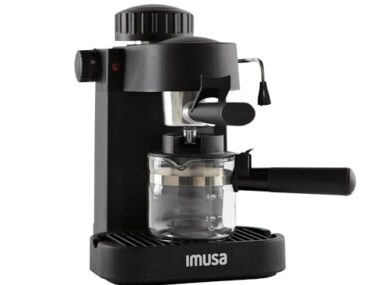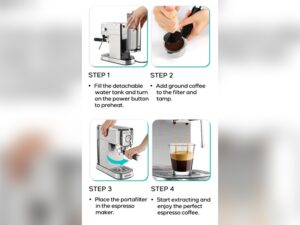If you love a great cup of espresso, understanding your machine can make all the difference. Knowing the 4 key elements of an espresso machine will help you get the perfect shot every time.
Whether you’re a beginner or looking to upgrade your setup, this guide will give you the inside scoop. By the end, you’ll feel confident in choosing or using an espresso machine that suits your taste and style. Ready to unlock the secrets behind your espresso?
Let’s dive in.

Credit: www.terresdecafe.com
Portafilter And Group Head
The portafilter and group head are crucial parts of an espresso machine. They work together to extract rich, flavorful espresso. The group head is the part where hot water meets the coffee grounds. The portafilter holds the coffee grounds tightly during this process. Both parts must fit well and work smoothly for the best coffee taste.
Role In Espresso Extraction
The group head controls water temperature and pressure. It forces hot water evenly through the coffee grounds in the portafilter. This process extracts oils, flavors, and aromas from the coffee. A stable group head ensures consistent brewing. The portafilter keeps the coffee grounds compact and secure. It helps create the right resistance for water flow. This resistance is key to a strong and balanced espresso shot.
Types Of Portafilters
There are several types of portafilters. The most common is the standard metal portafilter. It usually holds a single or double shot of coffee. Pressurized portafilters help beginners by controlling water flow. Bottomless portafilters show the espresso flow for better crema. Some machines use pressurized baskets for easier extraction. Choosing the right portafilter affects taste and ease of use.
Maintenance Tips
Clean the portafilter after every use. Remove coffee oils and grounds to avoid buildup. Use warm water and a brush to scrub it well. Check the group head for blockages regularly. Run water through it to clear any coffee residue. Replace worn gaskets and screens for a tight seal. Proper maintenance keeps espresso fresh and machine working well.
Boiler System
The boiler system is a vital part of an espresso machine. It heats water to the right temperature for brewing coffee. This system creates the steam needed to froth milk for drinks like cappuccinos. The quality of the boiler affects the taste and texture of your espresso.
Function And Importance
The boiler heats water to brew coffee and create steam. It must keep the temperature steady for the best espresso. A consistent temperature helps extract rich flavors from coffee grounds. Without a good boiler, espresso can taste weak or burnt. Steam power also depends on the boiler’s strength.
Single Vs. Dual Boiler
Single boilers do both brewing and steaming but one at a time. This means you wait between making espresso and frothing milk. Dual boilers have separate chambers for water and steam. They let you brew coffee and steam milk at the same time. Dual boilers provide better performance for busy use.
Temperature Control
Precise temperature control is key for great espresso. Water too hot or cold changes flavor and extraction. Good boilers use thermostats or sensors to keep heat steady. Some machines let you adjust temperature for different coffee types. Stable temperature means every cup tastes just right.
Pump Mechanism
The pump mechanism is a vital part of an espresso machine. It pushes water through the coffee grounds at high pressure. This pressure extracts flavors and oils, creating rich espresso. Without a good pump, espresso can taste weak or bitter. The pump controls the flow and pressure, influencing the final cup.
Purpose And Operation
The pump moves water from the reservoir to the coffee grounds. It creates pressure, usually around nine bars. This pressure forces hot water through the coffee quickly. The process extracts the coffee’s aroma and taste. The pump’s steady pressure is key to making good espresso.
Pump Types
There are two main types of pumps: vibratory and rotary. Vibratory pumps are small and common in home machines. They use a motor to move a piston back and forth. Rotary pumps are larger and found in commercial machines. They rotate a vane to push water smoothly. Each type affects the espresso’s consistency and machine noise.
Impact On Coffee Quality
The pump’s pressure impacts the espresso’s flavor and texture. Steady pressure creates balanced, rich espresso. Uneven pressure can cause sour or bitter notes. A strong pump ensures proper extraction of oils and flavors. Good pumps help produce crema, the creamy espresso layer on top.

Credit: www.amazon.com
Steam Wand
The steam wand is a vital part of an espresso machine. It helps create creamy, frothy milk. This tool allows you to make popular coffee drinks like lattes and cappuccinos. Without the steam wand, these drinks would lack their smooth texture.
Use In Frothing Milk
The steam wand blows hot steam into milk. This heats the milk and adds air to make foam. The foam gives coffee drinks a rich and creamy feel. Baristas use the wand to create different foam textures. Soft foam for lattes and thick foam for cappuccinos.
Design Variations
Steam wands come in different shapes and sizes. Some are long and flexible, while others are short and fixed. Certain models offer adjustable steam pressure. This helps control the frothing process better. Some machines have one steam wand; others have two. More wands allow making multiple drinks at once.
Cleaning And Safety
Cleaning the steam wand is important to keep it safe. Milk can dry inside and cause blockages. Always wipe the wand after use with a damp cloth. Flush steam through the wand to clear milk residue. Avoid touching the hot wand directly to prevent burns. Regular cleaning keeps your machine working well and safe to use.

Credit: idrinkcoffee.com
Frequently Asked Questions
What Are The Main Parts Of An Espresso Machine?
The four key elements are the boiler, group head, portafilter, and pump. Each part plays a crucial role in brewing espresso by controlling water temperature, pressure, and extraction.
Why Is The Boiler Important In Espresso Machines?
The boiler heats water to the perfect temperature for extraction. Consistent heat ensures balanced flavor and proper coffee crema in every shot.
How Does The Pump Affect Espresso Quality?
The pump controls water pressure during extraction. Ideal pressure, around 9 bars, ensures optimal coffee flavor and crema formation.
What Role Does The Portafilter Play?
The portafilter holds the coffee grounds tightly during brewing. It helps evenly extract flavors by maintaining pressure and water flow.
Conclusion
Understanding the four key elements helps you choose the right espresso machine. These parts work together to make rich, strong coffee. Knowing how each element functions saves time and money. It also improves your coffee experience every day. Remember, a good espresso machine depends on quality and care.
Simple knowledge leads to better coffee at home. Choose wisely, and enjoy every cup.
